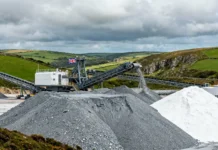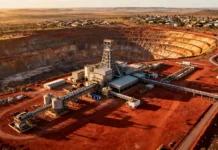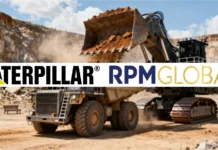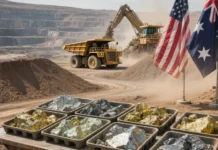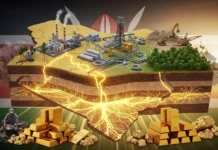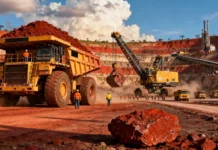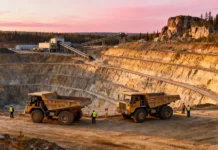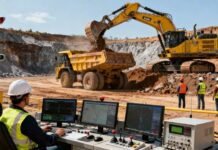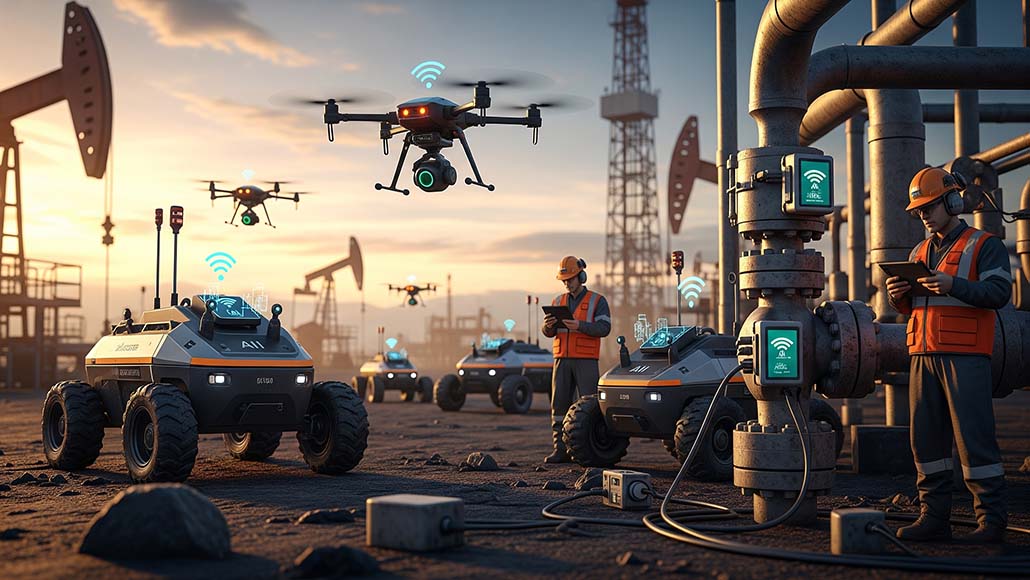As of 2025, the global oil and gas robotics market is entering a decisive phase when it comes to technological integration along with strategic growth. With industry players pushing really hard the boundaries of automation in a hazardous and high-risk environment, robotics has emerged as more than just an operational upgrade – it is rapidly becoming a foundational pillar when it comes to energy sector transformation.
As per a recent industry report by market.us, the global market happens to be valued at $1.9 billion in 2024 and is all set to reach somewhere around $6 billion by 2034. This reflects a CAGR of just over 12% across the forecast period. This kind of momentum happens to reflect the growing adoption of robotics technologies, which is indeed shaping the workflows throughout midstream, upstream, and downstream operations.
A sector that is on the verge of automation maturity
In 2025, oil and gas companies are prioritizing automation at a scale that is unimaginable. The intricacies of remote oilfields, infrastructure that is aging, environmental liabilities, and safety of the workforce are certain concerns that have intensified the push toward intelligent robotic systems. Apparently, these systems are no longer fringe tools, but they are now mission-critical assets both across onshore as well as offshore operations.
It is well to be noted that the global oil and gas robotics market size, share, and statistics analysis report goes on to confirm that robotic systems are helping with a smarter, safer, and more anticipated model of energy production, inspection, and even maintenance. Market performance in 2022 has already gone on to lay the groundwork for the fast expansion in North America, especially positioning itself as a phenomenal player.
Regional insights – North America leads in 2025
North America happens to be the disputed market leader in 2025, as it commanded a phenomenal share of almost 34% of the global market size in 2024. The dominance has translated into revenue, which exceeds $.6 billion, with the United States alone contributing $.5 billion.
It is worth noting that the US has established itself as a breeding ground when it comes to robotics innovation in oil and gas. All thanks to extensive shale development and a regulatory landscape that is very proactive, and even massive infrastructure investments. Moreover, the integration when it comes to AI as well as IoT, along with robotic systems, has helped with real-time tracking, autonomous inspections, and also predictive maintenance. These are the features that are expected as a norm in major energy hubs throughout North America.
Segment-wise analysis
By type – UGV’s are commanding the field
Among the robotic systems, unmanned ground vehicles (UGVs) claimed dominance in 2024 with more than 43.5% of the market share. These are equipped with advanced sensors along with AI-powered navigation and Excel across onshore environments. They perform crucial roles, such as drilling supervision, pipeline inspection, maintenance of the facility, and even data acquisition. Their resilience as well as autonomy make them indispensable in oil fields, which are, by the way, both expansive and remote.
By application – onshore leads the way
The onshore operations go on to represent yet another commanding domain, which accounted for over 67% of the market in 2024. The newly accessible terrain and strict safety legislation, along with infrastructures that are already established, have made onshore facilities major candidates when it comes to robotic integration. The capacity to roll out automated systems throughout the drilling as well as maintenance process helps in reducing the downtime along with human exposure, thereby justifying the growth when it comes to their adoption.
Drivers of the market in 2025: safety, efficiency along with predictability
Robotics has now become central to safety-first strategies in oil and gas enterprises. The harsh, explosive, and also unstable nature of the work environment stamps the usage of tools that can eliminate human exposure. Right from confined space exploration to even subsea surveys, robots happen to serve as a buffer between personnel as well as risk. Equally important happens to be the operational upside. Robotics, when teamed with AI as well as digital analytics, helps with early fault detection. They also enable real-time diagnostics in addition to predictive maintenance along with optimized scheduling.
It is well to be noted that in 2025, as energy measures continue to go ahead and embrace the ESG mandates along with cost reduction objectives, the ROI case when it comes to robotics grows even stronger with every passing quarter.
What are the emerging opportunities and challenges?
Autonomous innovation
The market happens to be at the threshold of a new era, which is driven by autonomous systems. Development within the AI as well as machine learning platforms has led to robots such as the AGRONAUT, which is capable of autonomous inspections, even in extreme conditions. Be it hot, humid, or corrosive environments, there is no involvement of human oversight at all. The systems go on to promise real-time intelligence, remote functionality, and even predictive analytics, giving the industry a major strategic edge.
The resilience of the environment
The flipside happens to be the technological resilience. Robots must endure certain seismic pressures, deep-sea conditions, corrosive chemicals, and even unstable terrain. Making sure of their ruggedness, reliability in communication, and even functional consistency within harsh environments happens to remain a technical frontier, which is indeed very critical when it comes to R&D investment along with innovation.
Trends – mapping the future
The Subsea Autonomy
Unmanned underwater vehicles (UUVs) happen to represent the vanguard when it comes to offshore robotics. They now perform operations that are nuanced, such as leak detection, pipeline inspections, and even seabed surface. As offshore exploration pushes really hard into deeper waters. The UUVs are going to become central instruments when it comes to precision maintenance along with stewardship in the environment.
Mobiles as well as aerial inspections
Beyond the sea as well as soil, UAVs as well as territorial mobile robots are gaining a lot of speed for the facility-wide inspections that they provide right from flare stacks to interior pipeline networks.
Fitted along with thermal cameras, LiDAR, and even gas sensors, the systems are indeed evolving from being junk tools to assets that are indispensable.
AI-driven predictive maintenance
Teaming the robotics with AI as well as IoT, the solutions now offer consistent tracking and analytics. The result is that maintenance windows are optimized, asset health is tracked, and there are unplanned failures that are preempted. This approach not just drives cost efficiencies, but at the same time, it also bolsters environmental compliance along with safety.
Strategic business benefits
Rolling out robotics yields a trifecta advantage – enhanced safety, elevated efficiency, and also reinforced sustainability. The worker exposure to certain hazardous tasks has gone down. Equipment uptime has improved by way of proactive defect tracking. Sensors, which are aboard the robots, enable early detection of emissions, thereby aligning the operations with certain environmental mandates and even ESG necessities.
The competitive anatomy
Robotics innovation in oil and gas is not just secluded to incumbents. Market leaders such as Energy Robotics GMBH, ANYbotics, and FANUC America Corporation have all gone on to pioneer varied domains right for inspection to subsea operations. Players such as Boston Dynamics, Saab Seaeye, and also Teledyne Marine have further diversified the field, thereby highlighting the convergence when it comes to advanced engineering along with domain-specific specialization.
Outlook along with conclusion
The global oil and gas robotics market size, share, and statistics analysis report happens to paint a very vibrant picture of a sector that is actually ascending. With the market anticipated to more than triple by 2034 to somewhere around $6 billion, the narrative is very clear – robotics are no longer optional, but they have become fundamental to gas operations. Right from the dominance of UGVs as well as onshore applications to the rapid buildup of autonomous underwater systems and even the growing integration of AI for predictive maintenance, the market is evolving under a range of safety demands, expenditure pressures, and even breakthroughs within technological elements.
Apparently, for industry leaders, the call is decisive – invest really hard in resilient and intelligent robotics. Develop stakeholder acceptability through the demonstrated ROI as well as compliance. When it comes to investors as well as innovators, the message is equally very clear – the momentum behind the global oil and gas robotics market size, share, and statistics analysis report happens to represent a very rare convergence when it comes to innovation, demand, and even profit opportunity.
The fact is that as energy operations confront environmental as well as safety agencies, robotics innovation in oil and gas happens to deliver a very poetic yet practical solution – melding the precision of technology along with the legacy of ingenuity in humans. The trajectory of the market happens to reflect not only industrial growth but, at the same time, foundational transition in how energy is going to be tracked, extracted, and stewarded in the decades to come.



